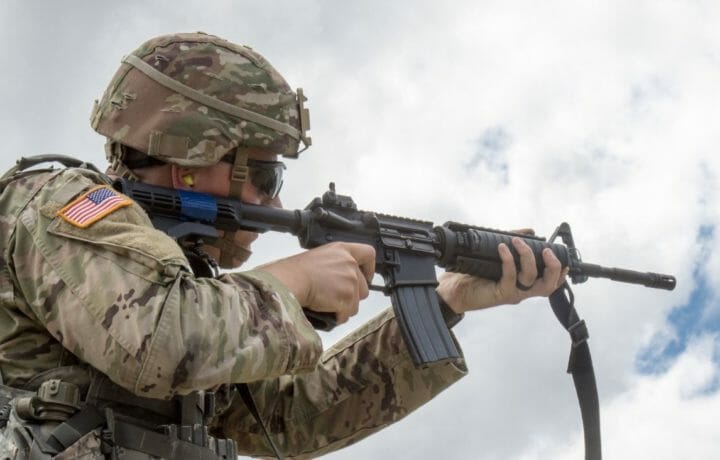The United States Army has announced that sometime later this year it will determine which of three potential options will be selected for its Next Generation Squad Weapon (NGSW). The Army has been conducting tests of the three previously selected weapons from General Dynamics Ordnance, Sig Sauer, and Textron Systems.
While each of the prototypes differs in design, all three are chambered for the new 6.8mm round, which was developed to be more lethal than the currently used 5.56mm or even 7.62mm NATO ammunition. The goal of the NGSW has been to find a single weapon that can replace the legacy M4 carbine, which was introduced in 1994 and is essentially a shorter and lighter variant of the M16A2 assault rifle; and the M249 light machine gun, formerly designated as the M249 Squad Automatic Weapon (SAW), which has been in service since 1984.
Next Generation Squad Weapon (NGSW) on the Way
The development of a single platform to replace both small arms has been no small task, and it was further complicated by delays that were brought on by the novel coronavirus pandemic. However, last fall the Army edged a little closer to determining which of the three options might be selected, and the weapons as well as ammunition are currently engaged in performance competitions.
The Army’s goal is that over the next five years it would add more than 120,000 new light machine guns and rifles to the arsenal to replace the M4 and M249. This would include 4,000 next fiscal year; double that number for 2023 and 2024 until by 2025 a total of 121,773 new weapons have been acquired. The price tag for the first 4,000 units was estimated to be nearly $36 million according to the budget documents.
However, the M4 and M249 won’t be retired from service immediately, and when those legacy platforms could be retired remains unclear.
“That is a future decision to be made, very much dependent on the prototyping we have going on now,” Gen. John Murray, head of Army Futures Command, told lawmakers during a House Armed Services subpanel hearing Monday.
When to Retire M4 and M249?
Many soldiers will likely continue to train with the older weapons for a long time, the Army added. At issue isn’t just the delivery of the new weapons, but the availability of ammunition. While the Army maintains vast quantities of ammunition and is well stocked up, ammunition for consumers and even law enforcement has been in short supply and increasingly high demand. Earlier this year, Federal Ammunition – which is a wholly owned subsidiary of Vista Outdoors – was among the manufacturers in the industry that announced it was running its operations 24/7 to meet demand.
Government contracts are fulfilled at dedicated plants, but there have still been supply issues with the components required to produce ammunition. The Lake City Ammunition Plant, the military’s largest producer of small-caliber ammunition, has also warned that it could take three to four years to transition to produce the 6.8mm rounds on a large scale. The government-owned, contractor-operated facility in northeastern Independence, Missouri is currently operated by Winchester Ammunition, which assumed full management and operational control last year.
Reduction in Ammo Spending
Beyond the transition time, the Army could face a reduction of more than half a billion dollars for ammunition spending – down from $2.8 to $2.1 billion, which is just part of the budget cut the service could face in the fiscal year 2022 (FY22) budget.
It remains unclear whether training draw downs last year during the pandemic saved the ammunition that has been stockpiled, but as the Army has 5.56mm and 7.62mm NATO rounds to go around for now it seem that the soldiers will use the guns they have. That could slow the adoption of the NGSW a bit and keep around the legacy M4 and M249 for a least a while longer.



